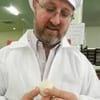Explore all the information on
Antimicrobials in poultry
Antimicrobial agents are essential tools for treating and controlling bacterial infections in poultry production. Veterinarians have a huge responsibility when using antimicrobials in poultry producing meat and eggs for human consumption. The term ‘judicious use’ of antimicrobials implies the optimal selection of drug, dose and duration of antimicrobial treatment, along with a reduction in inappropriate and excessive use as a means of slowing the emergence of antimicrobial resistance. The proper use of antimicrobials depends on the knowledge of interrelationships between bacteria, antimicrobial, host and consumer. The antimicrobial groups most commonly used in poultry are the betalactams, polypeptides, aminoglycosides and aminocyclitols, macrolides and lincosamides, florfenicol, tetracyclines, sulphonamides, quinolones and fluoroquinolones and ionophores.
Antimicrobial resistance is one of the top public health problems worldwide. Especially concerning is the loss of effective antibiotics for bacterial infections that were previously highly effective and led to major advances in human health. Continued exposure to existing classes of antibiotics with few new classes emerging, coupled with failure of pharmaceutical companies to recoup return on investment relative to other classes of drugs for use in modern medicine have created a complicated...
Comments : 0
Recommendations: 0
Dietary antibiotics have been used in the food animal industry for more than 60 years, not only to control infectious diseases, but also to increase feed efficiency and improve growth performance. In chickens, subtherapeutic, in-feed antibiotics can increase body weight gain up to 8% and decrease the feed conversion ratio (feed intake/body weight gain) up to 5%, both compared with an antibiotic-free diet. Antibiotics overuse and abuse on a global scale have led to the emergence of multi-drug...
Comments : 0
Recommendations: 0
Introduction Virulent bacteria are incriminated in huge economic casualties in the duck industry globally. Bacterial diseases cause higher mortality rates in ducks more than viral diseases. The mortality rates and bacterial diseases have been expanded worldwide [1-2]. Multiple of bacterial pathogens including P . multocida , Escherichia coli, Staphylococci , Pseudomonas aeruginosa, and Salmonella had become the major threats of duck...
Comments : 0
Recommendations: 0
how can l convert human dose to poultry dose as for a dose of a drug is 600 mg /kg daily to poultry dose in mg /kg ...
Comments : 0
Recommendations: 0
INTRODUCTION
The human population is projected to grow to 9~10 billion by the year 2050 (Godfray et al., 2010). As a consequence of the population explosion, food animal production would confront a new array of challenges. Among these are global food security, climate change, emerging infectious diseases, regulatory ban on use of antimicrobials, high-density production conditions, and waste management (Grasty, 1999; Turnpenny et al., 2001; Bohannon, 2004)....
Comments : 0
Recommendations: 1
The gastrointestinal (GI) tract harbors a diverse population of microbes consisting of not only bacteria, but also fungi, viruses, and protozoa. While much work has been focused on the characterization of intestinal bacterial community, very little is known about the fungal community, or mycobiota, in different animal species and chickens in particular. Here we characterized the biogeography and maturation of the mycobiota in the GI tract of broiler chicks and further examined its possible...
Comments : 0
Recommendations: 1
Armitra Jackson-Davis (Alabama A&M University) explained her research on the benefits of Yucca extract in combination with organic acids, during IPPE 2020 in Atlanta, USA....
Comments : 2
Recommendations: 2
...
Comments : 0
Recommendations: 1


Bacillus subtilis DSM 32315 alters immunity, nutrient transporters and cecal microbiome of broiler chickens under necrotic enteritis challenge
Suggested link
Dr. Kendra Waldbusser (Pilgrim's) discussed consumers trends and responsible use of antibiotics, during the 2018 NIAA Antibiotic Symposium....
Comments : 1
Recommendations: 0
Roller coaster, there is no more accurate word to describe this year's price trend of Florfenicol.
From the 2019 Florfenicol chart, we can see that the trend went down and up and down again, coming out of a "roller coaster", with a significant fluctuation.
On December 31st, the average price was 448 yuan/kg,...
Comments : 0
Recommendations: 0
Introduction
Respiratory infections particularly those in which bacterial pathogens are involved (Glisson, 1998), are some of the most serious diseases of poultry (van Empel and Hafez, 1999). Increased mortality, increased costs of medication, increased condemnation rates, drops in egg production, reduction in shell quality, and decreased hatchability directly associated with these respiratory infections in poultry cause heavy economic losses (van Empel and Hafez,...
Comments : 0
Recommendations: 1
The poultry farming now-a-days plays a vital role in global economy. Farmers throughout the globe have moved from rearing domestic birds in the past to rearing hybrids which ensure faster growth of chicks, low mortality rates, excellent feed conversion ratio and consequently sustainable profits to the poultry farmers. This has been well supported by extensive efforts worldwide to improve the overall performance of the poultry in terms of growth and production so as to improve the economy...
Comments : 3
Recommendations: 0


Bacillus licheniformis-Fermented Products Improve Growth Performance and Intestinal Gut Morphology in Broilers under Clostridium perfringens Challenges (Extract)
Suggested link
INTRODUCTION The simplest approach to decrease dependence on routine antibiotic regimes in animal production is to implement alternative methods to control the bacterial challenges that the antibiotics are modulating (and not look at antibiotics as non-specific production enhancers). The chronic nature of mycoplasma infections and vertical transmission in poultry are the reasons for the strategy of mycoplasma freedom but this is often very difficult to implement at the final...
Comments : 1
Recommendations: 2
Kelsy Robinson (Oklahoma State University) discussed the importance of a better understanding of intestinal mycobiota to improve poultry health and productivity, during the 8th Symposium on Gut Health in Production of Food Animals in St. Louis, USA....
Comments : 0
Recommendations: 0
INTRODUCTION Salmonella enterica is the 3rd leading cause of foodborne illnesses globally; accounting for 78 million illnesses and 59 thousand foodborne-related deaths annually (Havelaar et al., 2015). In the United States, non-typhoidal Salmonella is responsible for 1 million illnesses, 19 thousand hospitalizations, and 378 deaths each year (Scallan et al., 2011). Children (≤5 years old) and the elderly (>65 years old) are most susceptible to Salmonella infection,...
Comments : 1
Recommendations: 0
Maarten De Gussem, global poultry consultant and founder of Vetworks, is a keynote speaker this week at the Latin American Poultry Congress in Lima, Peru. De Gussem is presenting the latest findings on two important topics in poultry health on Bacterial Enteritis and Salmonella control programs in the...
Comments : 0
Recommendations: 0
INTRODUCTION Avian coccidiosis is major parasitic disease of high economic concern in the poultry industry worldwide and is caused by at least seven distinct species of Eimeria apicomplexan protozoa that infect the various areas of intestinal mucosa. The economic loss for avian coccidiosis is estimated to be more than $3 billion worldwide (Williams, 1999) and this cost includes in-feed medication, mortality, impaired growth rate, inefficient feed utilization and reduction in egg...
Comments : 1
Recommendations: 2
INTRODUCTION The intestinal microbiome shapes the gut immune system. In rodents, for example, intestinal colonization by Bifidobacterium infantis or Faecalibacterium prausnitzii stimulates the development of Foxp3 + T regulatory cells (Tregs) and interleukin-10 (IL-10) production, while segmented filamentous bacteria induce proinflammatory T helper 17 (Th17) cell development (Lee and Mazmanian, 2010). In chickens, Yin et al. (2010) reported that an evolving gut...
Comments : 0
Recommendations: 1
Dianna Bourassa (Auburn University) explained the results obtained in this research using three different levels of peroxyacetic acid to minimize carcass contamination, during IPPE 2019 in Atlanta, USA....
Comments : 1
Recommendations: 0




.jpg&w=3840&q=75)


.mp4&w=3840&q=75)




















